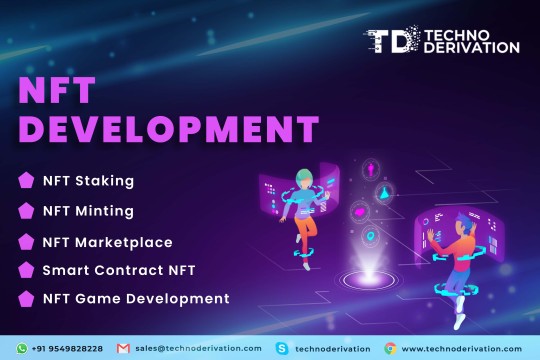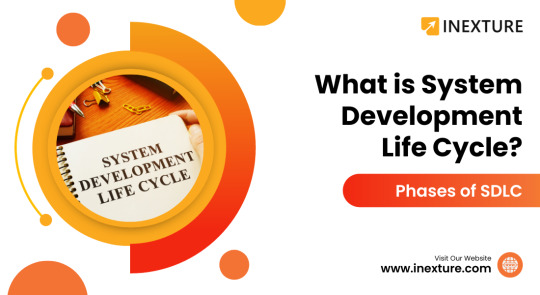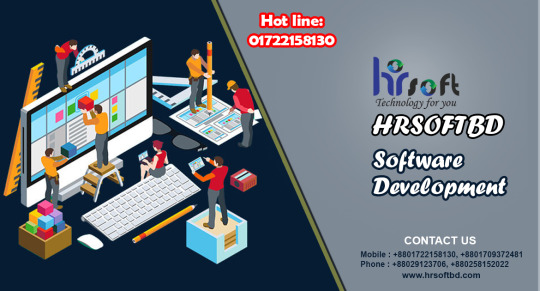#softwaredesigning
Text
Thathwaa: Best software development companies in Kannur

Thathwaa is one of the best software development companies in Kannur, which has the best software designing team having the best proficiency and technical skills in handling the projects of the customer's business on a large scale. For promoting their business and mainly focussing on their business reach, Thathwaa helps in supporting your organization's growth and business transformation to the pinnacle. This company helps you recognize your product's identity and brand. Mainly Thathwaa helps in the development of software for large and small-size organizations around the world with the help of the most modern and advanced technologies. With the help of excellent strategies and plans, with the help of multiple social media platforms, Thathwaa broad your business a step ahead in your business among all competitors. Customers are happy with Thathwaa's excellent support and services in their business development.
Instagram: https://www.instagram.com/thathwaa/
Facebook: https://www.facebook.com/thathwaacommunications
Twitter: https://twitter.com/Thathwaa_Comms
Linkedin: https://www.linkedin.com/company/thathwaa-communication-pvt-ltd/
Visit us on
Website: www.thathwaa.com
#bestsoftwaredevelopmentcompaniesinkannur#bestsoftwaredevelopment#softwaredesigning#support#services#businessdevelopment#socialmedia#brandawareness#product#thathwaa#kannur
0 notes
Text

Finish Line PDS presents Software Development Services, Designed Specifically for Small Businesses and Startups.
#Software#SoftwareDevelopment#SoftwareDevelopers#SoftwareDesign#ProductDevelopment#ProductDesign#EngineeringHelp#TechnologySolutions#Startups#BusinessStartups#TechStartups#SmallBusiness#SmallBusinesses#SmallBusinesstips#Startup#ProductDesigns#Innovation#InnovationDesign#Innovations#Entrepreneur#Entrepreneurs#Entrepreneurship#FinishLinePDS
2 notes
·
View notes
Text
hrsoftwarebd

Student Attendance Software
#hrsoftbd#fingerprints#fingerprinting#softwaredeveloper#softwarecompany#softwaredesign#programmingsoftware#softwaredevelopmentcompany#TimeAndAttendance#ClockingIn#Timesheets#AbsenceManagement#AccessControl#TimeandAttendance#ClockCards#TimeAndAttendanceSystems#AccessControlSystems#businesssoftware#webdesignsoftware#mobiledevelopmen#WorkforceManagementSolutions#applicationdevelopment#studentattendance
2 notes
·
View notes
Text

CONCORD ERP
A COST EFFECTIVE
EASY TO LEARN
EASY TO USE
ERP SOLUTION
FOR YOUR BUSINESS

Visit: http://techwaveitsolutions.com/
#erp#clouderp#SoftwareDevelopment#software#SoftwareDeveloper#softwares#softwaretesting#softwaresolutions#softwaredesign#softwaresupport#softwaredevelopmentcompany#toperpsoftwareinindia#humanresourcemanagementsoftware#techwave#techwaveitsolutions#consultingcompany#itcompany#indore
0 notes
Text
Unveiling Your Dream Website: Tech Mind Developers — Aligarh’s Budget-Friendly Web Design Experts!

Looking to establish a strong online presence for your business in Aligarh? Look no further than Tech Mind Developers! We are your one-stop shop for top-notch website design and development, all at prices that won’t break the bank.
Why Choose Tech Mind Developers?
Affordable Excellence: We understand the importance of budget-friendly solutions. That’s why we offer competitive pricing, ensuring you get a fantastic website without overspending.
Local Expertise: We are Aligarh-based, meaning we have a deep understanding of the local market and its needs. We’ll tailor your website to resonate with your target audience in Aligarh.
Simple and Clear Communication: No tech jargon here! We speak in plain English, keeping you informed throughout the entire website development process.
Specialists in Your Industry: We have extensive experience crafting websites for various industries, including schools, restaurants, salons, grocery stores, bakeries, and stationery shops. We understand the unique needs of each sector and can create a website that perfectly reflects your business identity.
Focus on User Experience: Your website should be easy for visitors to navigate and find the information they need. We prioritize user-friendly design and clear calls to action, ensuring a smooth and positive experience for your customers.
Beyond the Basics: Our Comprehensive Website Development Services
At Tech Mind Developers, we go beyond just creating a pretty face. We offer a comprehensive suite of services to empower your online presence:
Mobile-Friendly Design: In today’s digital world, a mobile-friendly website is crucial. We ensure your website looks fantastic and functions flawlessly on all devices, from desktops to smartphones.
Search Engine Optimization (SEO): We optimize your website to rank higher in search engine results, making it easier for potential customers to find your business online.
Content Management System (CMS): We equip you with a user-friendly CMS, allowing you to easily update your website content, add news, and manage your online presence without needing technical expertise.
Ready to Launch Your Dream Website?
Don’t settle for a mediocre website! Partner with Tech Mind Developers, Aligarh’s leading provider of affordable and effective website design and development solutions.
Contact us today for a free consultation! We’ll discuss your vision and craft a website that exceeds your expectations, propelling your business towards success in the digital age.
Tech Mind Developers Contact:
Phone Number: +91 7835019421
Website: https://www.techminddevelopers.com/
#techminddevelopers #aligarhwebdesign #aligarhwebdevelopment #affordablewebsite #aligarhbusiness #localbusinessaligarh #growyourbusinessonline #aligarhseo #userfriendlywebsite #schoolwebsite #restaurantwebsite #salonwebsite #grocerystorewebsite #bakerywebsite #stationarywebsite #aligarhdigitalmarketing
#techminddevelopers#softwaredevelopment#mobile app development#softwaredesign#websitedevelopment#best software company in patna#delhincr#mobileapplications#softwaresolutions#aligarh
0 notes
Link
0 notes
Text
Unilevel MLM Software Plan
Title: Unleashing Success: The Power of Unilevel MLM Software Plan.
When it comes to network marketing, Unilevel MLM Software Plan is a key player in driving success and expansion, combining opportunity and innovation. Its distinctive design and interactive components provide participants with a clear route to financial independence and empowerment. Delve into the details of Unilevel MLM Software Plan and discover how it can transform your business.
Understanding the Unilevel MLM Software Plan:The Unilevel MLM Software Plan is a great way for participants to earn rewards for their sales and team building efforts. Unlike traditional MLM plans, the Unilevel Plan allows for a wide and deep organization, which can lead to increased earnings and growth.
Key Features of the Unilevel MLM Software Plan
Unlimited Width: The Unilevel MLM Software Plan stands out for its unlimited width, allowing participants to recruit as many distributors as they want on their frontline. This helps them create a large network of distributors, extending their reach and boosting their potential earnings.
Depth-Based Commissions:Members of the Unilevel Plan make money from the sales volume of their team members up to a set level. As their team expands and meets sales goals, they can earn commissions on various levels in their organization, giving them a consistent source of income.
Leadership Bonuses: The Unilevel MLM Software Plan allows members to earn leadership bonuses based on their performance and rank within the organization. As members progress and reach certain goals, they can access more bonuses and rewards, encouraging them to succeed and guide their team to victory.

Dynamic Reporting and Analytics:The Unilevel MLM Software Plan offers users detailed reporting and analysis tools to monitor their sales performance, team activity, and areas for improvement. Participants can make data-driven decisions and enhance their strategies for success with real-time information on hand.
Seamless Integration: The Unilevel MLM Software Plan easily works with other business tools and systems, helping participants effectively manage their business operations and simplify their workflows. Whether it's customer relationship management (CRM) software or e-commerce platforms, the Unilevel Plan guarantees a seamless and productive user experience.
Conclusion: Empowering Success, One Level at a Time:
To sum up, the Unilevel MLM Software Plan is an effective tool for individuals seeking success and financial independence in the field of network marketing. With its limitless width, commissions based on depth, bonuses for leadership, detailed reporting, and smooth integration, the Unilevel Plan provides participants with a way to enhance their abilities and expand. Don't hesitate any longer - harness the potential of the Unilevel MLM Software Plan and propel your business to greater heights of achievement today.
#software development#succession#amazingthailandcountdown2024#technology#accounting#appdeveloper#cryptocurreny trading#english literature#language#programming#eifasoft#eifasoftmlm#mlm#multilevelmarketing#bestmlmsoftware#bestsoftware#bestmlm#bestmlmsoftwarecompany#mlmsoftware#mlmwebsite#mlmdevelopment#mlmdesigner#mlmsoftwarecompany#mlmdeveloper#website#webdevelopment#softwaredevelopment#softwaredesigner#websitedeveloper#developer
0 notes
Text
"The Advantages of Combining 'Top-Down' and 'Bottom-Up' Approaches in Software System Design"
This article explores the benefits of employing both "top-down" and "bottom-up" approaches in software system design. By combining these methodologies, developers gain a comprehensive understanding of system architecture while ensuring attention to detail at the component level. This integrated approach enhances efficiency, flexibility, risk mitigation, collaboration, and ultimately leads to more robust software solutions.
"Take your IT skills to new heights with our unrivaled online training experiences."
#SoftwareDesign#SystemArchitecture#TopDownApproach#BottomUpApproach#SoftwareDevelopment#Collaboration#Efficiency#Flexibility#RiskMitigation#magistersign#onlinetraining#support#cannada
0 notes
Text
NFT Token Development Company

Our NFT token development company specializes in creating unique and secure digital assets on blockchain platforms. We offer end-to-end solutions for businesses and individuals looking to tokenize their assets or create new NFT projects. With our expertise in blockchain technology and smart contract development, we ensure that our clients receive high-quality, customizable, and scalable NFT solutions.
#software development#softwaredesign#usa#florida#software engineering#technology#web developers#webdevelopment#web3 development#it services
0 notes
Text
Thathwaa: Best web development in kannur

Thathwaa is the best software development company which has the best web development in Kannur which supports and encourages customer business on a large scale with the help of website development. Thathwaa has the best website development professionals which helps customers helps to broaden and expand their business on a wide range with the help of the best website development professionals with great knowledge and experience.
Thathwaa helps in standing out your brand from others. Thathwaa is the best promising and compatible partner for customer's business. For achieving high level performances which helps you in setting up and transforming customer's company. Web designing becomes the unique ideology of business idendity. This website can really incorporate your framework and Thathwaa can be accessible from anywhere. The main purpose of this website is for building traffic-driven websites by making your company successful.
Instagram: https://www.instagram.com/thathwaa/
Facebook: https://www.facebook.com/thathwaacommunications
Twitter: https://twitter.com/Thathwaa_Comms
Linkedin: https://www.linkedin.com/company/thathwaa-communication-pvt-ltd/
Visit us on: www.thathwaa.com
#technology#websitedevelopment#softwaredevelopment#branding#technologyconsulting#digitalmedia#thathwaa#kannur#bestmobileappdevelopmentcompanyinkannur#mobileappdevelopment#mobileapps#business#android#ios#bestsoftwaredevelopmentcompanyinkannur#software#customer#services#bestsoftwaredesigncompanyinkannur#softwaredesign#softwarecompany#softwarebusiness#thathwaacommunications#bestservices
2 notes
·
View notes
Text
Explore the System Development Life Cycle and Phases

Have you ever considered how a simple idea changes into a computer program or application? That is exactly what we shall address in this blog. We’re starting the System Development Life Cycle (SDLC). It helps those who work in programming (such as engineers and venture capitalists) get from a great idea to a finished product.
It is more than just a set of rules; it resembles a programming guide, from the initial plan to the final contacts and, unexpectedly, after it is unquestionably completed. Is it safe to assume that you are a programmer, learning to code, or simply curious about how your favorite applications are created?
You’re perfectly situated. We will look into SDLC in a lighthearted and straightforward manner. We’ll go over each step, understand why it’s important, and learn some cool stunts along the way.
Definition and Purpose of System Development Life Cycle (SDLC)
The System Development Life Cycle (SDLC) is a series of steps that individuals take when developing computer programs and systems. It is an efficient technique for ensuring that the product they produce is of high quality, acceptable in price, and serves its intended purpose.
The primary goal of SDLC is to provide a clear structure to programming development teams so that they can operate efficiently, make informed judgments, and avoid overpaying. It includes everything from the beginning – such as deciding what the software should accomplish and how to the end of the project and how to maintain the software after it is created.
The System Development Life Cycle is beneficial because it ensures that the people developing the software consider everything that is necessary, satisfy the demands of the people who will use it, and address any issues that may arise along the route.
Brief Overview of SDLC’s Phases
The System Development Life Cycle (SDLC) resembles a formula for programming. A step-by-step guide supports people in developing computer programs in a logical and coordinated manner. To begin with, it helps them organize what they need to do.
Then they begin developing the program, testing it to ensure that it works properly, and finally releasing it for public use. It’s like making, baking, testing, and presenting a cake. This cycle assures that the product is well-made, does what it should do, does not cost too much money, has a profit margin, and can be easily fixed or renewed from here on out.
7 Phases of the System Development Life Cycle (SDLC)
Phase 1: Planning
The Planning Phase is the first and crucial step in the System Development Life Cycle (SDLC). It sets the foundation for the entire project and involves three key activities:
Defining Project Scope and Objectives: This step is similar to developing a clear and simple plan that defines what the project will do and achieve. It entails determining the framework’s primary tasks, addressing explicit concerns, and outlining unambiguous objectives. This keeps the project on track and ensures that all involved parties, including clients, understand what the final structure will look like, avoiding surprises.
Gathering Requirements: After identifying the project’s objectives, the next step is to figure out exactly what the clients and personnel involved require from the framework. This is accomplished by speaking with them, leading evaluations, holding studios, and investigating any existing records associated with the framework. The goal is to create a comprehensive list of all the tasks that the framework must complete. This breakdown is important because it aids in the planning and construction of the framework. If we don’t get this phase right, we may end up with a framework that doesn’t help clients as much as it should.
Risk Analysis and Management: Identifying and managing risks early on is critical to the success of any endeavor. This entails anticipating potential problems, such as specialized challenges, exceeding budget, or modifications to be expected. For each bet, we determine the likelihood of success and the potential impact on the project. Then we devise a strategy for dealing with these risks, which may include contingency plans or methods of preventing incidents from occurring. The executives make a great gamble by keeping the venture running well and prepared for any unexpected surprises.
Phase 2: Analysis
The Analysis Phase in the System Development Life Cycle (SDLC) is a critical stage where the foundation for the entire project is laid. This phase involves three key activities:
Assessing Current Systems and Processes: The most significant component of the SDLC Examination Period is a thorough analysis and comprehension of the ongoing frameworks and cycles. This entails reviewing the current programming and equipment, how things are completed, and how clients interact with the framework. The goal is to determine which aspects are successful and which are not, thereby providing a clear picture of how the new framework will fit in. This review is crucial for determining what the new framework requires and ensuring that prior mistakes are not repeated.
Identifying Needs for New System: Recognising Needs for New Framework: Following the evaluation of existing frameworks, the next stage is to identify the specific requirements and prerequisites for the new system. This includes consulting with various partners, such as end-users, executives, and IT employees, to get their perspectives and assumptions. The goal is to understand what the new framework should accomplish, what difficulties it has to address, and how it can improve the existing system Development. This step is critical for ensuring that the new system is aligned with corporate objectives and client requirements.
Creating Detailed Requirements Documentation: The Examination Stage concludes with the creation of specific requirements documentation, which serves as a project diagram. This document defines what the framework should accomplish (functional requirements), how it should perform (non-functional needs), and any imperatives. It is critical for steering the subsequent stages of the System Development Life Cycle (SDLC) and ensuring that everyone has a clear understanding of the work objectives. Accuracy in this report is critical to avoiding problems later on.
Phase 3: Design
The Design Phase, which is the third stage of the System Development Life Cycle (SDLC), plays a critical role in transforming the project’s requirements and analysis outcomes into a blueprint for the final system. This phase comprises three key components:
Architectural Design and System Specifications: This step focuses on developing a point-by-point strategy for the system’s architecture, demonstrating how various programming components, information for executives, and handling duties will be organized and collaborated. The engineering configuration serves as a guide for designers, demonstrating the overall structure of the framework and the collaboration between its components. In addition, framework determinations have been completed, which list the capabilities, UIs, and other significant components. This detailed outline is critical for steering the improvement cycle and ensuring that the system operates as planned.
Hardware and Software Selection: After planning the system architecture, the next critical stage is selecting the appropriate equipment and programming. This option has a significant impact on the system’s exhibition, development potential, and compatibility with existing systems. For equipment, this includes selecting the appropriate servers, network configuration, and client devices. For programming, it is associated with selecting the best programming languages, data sets, and any other tools. This decision is influenced by the available budget, current technological trends, and how the framework may need to evolve in the future.
Prototyping and Mockups: The final step in the Plan Stage is to create models and mockups. Prototyping is the process of creating a basic version of a system or its core components in order to test its functionality and receive feedback. This allows for the rapid detection and resolution of problems. In the meantime, mockups are mostly concerned with planning and design. They demonstrate what the system will look like, focusing on the user interface. The two models and mockups are critical for gathering feedback from everyone involved, ensuring the framework is simple to comprehend, and ensuring it matches clients’ needs and expectations.
Phase 4: Development
The Development Phase in the System Development Life Cycle (SDLC) is a critical stage where the actual construction of the software system takes place. It involves three main activities:
Coding and Programming: During the Advancement Stage, engineers convert the framework configuration records into actual programming. They write code in a certain programming language, adhering to the previously established building plan and specifics. This process is detailed and important, as designers code and condense many components of the product to ensure they work seamlessly together. The manner in which the code is crucial to the product’s dependability and performance.
Development Environment Setup: Before beginning to code, a reasonable development environment including core tools such as code editors, compilers, and version control frameworks is established. This ensures a consistent and efficient work environment for designers, reducing postponements and specialized complications.
Milestone Tracking and Progress Reports: During the Advancement Stage, progress must be monitored. This is accomplished by tracking successes – essential objectives in the task’s timeline of events – and providing regular progress reports to the project manager. These measures ensure that the endeavor remains focused, that difficulties are identified and resolved quickly, and that partners are kept up to date.
Phase 5: Testing
Phase 5 of the System Development Life Cycle (SDLC), known as the Testing Phase, is a critical stage where the developed software is rigorously evaluated to ensure it meets the required standards and functions as intended. This phase involves three key activities:
Test Plan Creation: Before testing the product, a detailed test strategy is created. This strategy outlines the testing technique, identifying which aspects of the product will be tested and how. It distinguishes between many types of tests, including usefulness, execution, and security. The arrangement also specifies the resources needed, timelines, and responsibilities of each coworker. A thoroughly developed test strategy is essential for a methodical and effective testing process.
Test Execution and Bug Fixing: Test Execution and Bug Fixing- Once the test plan has been established, the real testing of the product occurs. Analyzers perform the prescribed tests to identify any abnormalities or faults. They document any flaws they discover, which are then sent to the engineers to be fixed. After the bugs have been fixed, the product is tested again to confirm that the fixes function and do not introduce new issues. This process of testing, repairing, and retesting continues until the product meets the quality standards outlined in the test plan.
User Acceptance Testing (UAT): User Acceptance Testing (UAT) is an important stage in the product testing process in which genuine end users or clients test the product. The goal of UAT is to ensure that the product works well in real-world scenarios and satisfies the client’s specific needs and requirements. It is the final testing stage, and the product is only delivered after successfully passing UAT. This testing is necessary since it ensures that the product is both useful and user-friendly, guaranteeing that it meets the client’s expectations.
Phase 6: Integration and Implementation
In Phase 6 of the System Development Life Cycle (SDLC), which is the Integration and Implementation Phase, several key activities take place to ensure the successful deployment and introduction of the developed system:
Integration of Developed Components: Stage 6, Incorporation and Execution, combines all created pieces into a cohesive framework. It tests their communications to ensure consistent activity, which is an important aspect in making the system work as a whole rather than just isolated pieces.
Deployment and Rollout Strategies: The system is ready for use, and organizational procedures are followed. These methods include deciding whether to supply the system all at once or in stages, as well as whether to arrange for local or remote installation. A series of activities is planned to make the system accessible to clients. Careful preparation and implementation of these procedures are critical for a smooth transition to the new system with minimal disruptions.
User Training and System Introduction: During the SDLC’s Joining and Execution Period, it is critical to thoroughly familiarise clients and stakeholders with the new structure. This entails providing several types of training, such as face-to-face meetings, online instructional activities, and documentation, to ensure that clients can use the system effectively. Furthermore, the system is officially acquainted with the client’s location, and supporting components such as help workspaces or gatherings are established. Clear communication and preparation are essential for client acceptance and satisfaction with the new system.
Phase 7: Maintenance
In the final phase of the System Development Life Cycle (SDLC), known as the Maintenance Phase, the focus shifts from building and deploying the system to ensuring its continued functionality, reliability, and improvement. This phase involves three key activities:
Monitoring System Performance: When using the system, it is critical to regularly review the presentation. This includes evaluating reaction times, asset utilization (computer processing and memory), and overall dependability. Distinguishing difficulties early on requires quick action to maintain up with optimal execution, ensuring a seamless client experience.
Handling Updates and Modifications: In the Upkeep Stage, the system is updated and adjusted to meet changing needs. This includes enhancing highlights, addressing bugs, and increasing security. Careful planning and testing are essential for avoiding new problems. Rendition control tracks changes methodically, while compelling change on the board ensures system strength and consistent quality.
Resolving Issues and System Enhancements: In the Support Stage, the framework’s presentation is observed, and concerns such as specialized issues or client complaints are resolved quickly to minimize disruptions and keep clients satisfied. Furthermore, system changes are performed in response to client feedback and evolving needs to increase utility and productivity, ensuring that the framework remains relevant to the organization.
Importance and Role of SDLC Phase
The System Development Life Cycle (SDLC) resembles a step-by-step strategy for creating excellent PC programs. It helps programmers create code that works well and is free of errors. Each item of the arrangement (or stage) requires tremendous effort.
In the first place, it organizes the task from beginning to conclusion, so everyone knows what to do. It also improves people’s communication and collaboration skills. Along these lines, they can determine what the product needs to do and ensure that it is on the right road.
During the various stages, they reach important findings about how the product will function, such as developing a structured outline. They also select the appropriate equipment and verify that everything operates well. They evaluate the product to identify and correct any flaws, guaranteeing that it is suitable for human use. Surprisingly, once it’s completed, they deal with it, issuing updates and resolving bugs to keep it working well. Thus, SDLC resembles a prescription for success in programming!
Advantages and Disadvantages of SDLC Phases
Understanding the advantages and disadvantages of the System Development Life Cycle (SDLC) phases is essential for effective project management and software development. In this discussion, we explore the benefits and drawbacks of following a structured SDLC approach.
Advantages of SDLC Phases
Structured Approach: SDLC provides an organized and logical approach to software development, ensuring that each stage has a valid cause and outcome.
Improved Planning: It allows for thorough planning and requirements gathering, reducing the chances of project scope creep.
Quality Assurance: Thorough testing and approval during the testing stage result in greater programming quality and dependability.
Better Communication: SDLC facilitates straightforward communication among project participants, ensuring that everyone is in complete agreement.
Risk Management: Risk analysis in the Planning Phase helps identify and mitigate potential issues early.
User Involvement: Clients are involved in the meantime, resulting in a framework that better meets their concerns.
Efficiency: Efficient development and deployment save time and resources.
Maintenance: The Maintenance Phase ensures ongoing system stability and adaptability.
Disadvantages of SDLC Phases
Rigidity: SDLC can be inflexible, making it challenging to accommodate changes in requirements.
Lengthy Process: Following all phases can make the development process lengthy, which may not be suitable for projects with tight deadlines.
Upfront Costs: Extensive planning and documentation in the early phases can lead to higher upfront costs.
User Involvement Challenges: Keeping users involved throughout the process can be challenging, leading to potential misunderstandings.
Not Ideal for Small Projects: SDLC may be overly cumbersome for small-scale projects.
Resistance to Change: Teams may resist changing requirements after the design phase, leading to resistance to adapting to new information.
Complexity: For complex projects, managing and coordinating all phases can be a significant challenge.
Not Suitable for All Projects: SDLC may not be the best fit for projects with rapidly changing requirements or experimental development.
Conclusion
Understanding the System Development Life Cycle (SDLC) is critical for any organization that wants to ensure that its product initiatives run smoothly. SDLC has several stages, from the beginning to the end, that help keep everything organized and profitable.
At Inxture we are experts in Web, Mobile App, and Software Development Services, guiding organizations through each stage of the Software Development Life Cycle (SDLC). We’re here to help you achieve your product goals, whether you need to create a new application, improve your current framework, or make your processes more efficient.
In this regard, please contact us, and let’s work together to turn your product ideas into actuality.
Read More Explore the System Development Life Cycle and Phases
#SystemDevelopmentLifeCycle#SDLCPhases#SoftwareDevelopment#ProjectManagement#SoftwareLifeCycle#SoftwareDesign#SDLCStages
0 notes
Text

there is no widely recognized or established term or technology known as "blackchain." It's possible that this term has been introduced or gained significance after that date, or it could be a typographical error. If "blackchain" is a term or concept that has emerged more recently,
#softwarecompany#software#softwaredevelopment#softwaredeveloper#softwareengineer#softwaresolutions#softwarehouse#softwaredevelopers#softwareengineering#softwaretesting#webdevelopment#technology#softwaredesign#digitalmarketing#business
0 notes
Text
hrsoftwarebd

Software Development
#hrsoftbd#software#softwaredeveloper#softwarecompany#softwaredesign#softwaredevelopmentcompany#mobiledevelopment#applicationdevelopment#codingsoftware#appdevelopmentsoftware#softwaredevelopmentcourses#websitedesignsoftware#customersoftwaredevelopmentcompany#gamedevelopmentsoftware#androidappdevelopmentsoftware#webdevelopmentsoftware#manufacturingsoftware#softwaredevelopmenttools
2 notes
·
View notes
Text

Watch & Learn with
Complete Learning Management System
#SoftwareDevelopment#software#SoftwareDeveloper#softwares#softwaretesting#softwaresolutions#softwaredesign#softwaresupport#softwaredevelopmentcompany#learningmanagementsystem#lms#concordlms#concordlearningmanagementsytem#LMS#userfriendly#employeelearningmanagementsystem#techwave#techwaveitsolutions#consultingcompany#itcompany#indore
0 notes
Text
The Power of Local SEO: Attract More Customers Through Nearby Searches
Do you ever wonder how people find businesses in their local area? The answer: local SEO! In today’s digital age, having a strong online presence is crucial, especially for attracting customers nearby. Here at Tech Mind Developers, we can help you unlock the power of local SEO and watch your local customer base flourish.
What is Local SEO?
Local SEO focuses on optimizing your website and online presence to rank higher in search results for local searches. This means when people in your area search for businesses like yours, your website is more likely to appear at the top.
Why is Local SEO Important?
Local Leads, Local Sales: Most people searching for businesses online are looking for options close by. Local SEO helps you target these potential customers actively looking for what you offer.
Mobile Magic: Mobile searches often have local intent. Local SEO ensures your business shows up on those mobile searches, making it easy for customers to find you on the go.
Reviews and Reputation: Local SEO tools like Google My Business allow you to manage your online reputation and showcase positive customer reviews, further attracting local customers.
How Can Tech Mind Developers Help?
Our local SEO experts have the know-how to get your website noticed in local searches:
Location, Location, Location: We’ll optimize your Google My Business listing and ensure your website’s location information is accurate and consistent across the web.
Keyword Research with a Local Twist: We’ll identify relevant keywords people in your area use to find businesses like yours.
Content is King (and Queen): We’ll create engaging content that highlights your local services, expertise, and community involvement.
Building Bridges Online: We’ll help you build citations, which are backlinks from other local websites that act as votes of confidence for your business in the eyes of search engines.
Unlock the Potential of Your Local Market
Don’t miss out on the power of local SEO! Contact Tech Mind Developers today for a consultation and let’s discuss how we can help you attract more local customers and grow your business.
Tech Mind Developers Contact:
Contact Number: +91 7835019421
Website: https://www.techminddevelopers.com/

#techminddevelopers#softwaredevelopment#mobile app development#softwaredesign#websitedevelopment#best software company in patna#delhincr#mobileapplications#softwaresolutions#aligarh#localseo#digitalmarketing#localbusiness#growyourbusiness#online marketing#websitedesign#seo#marketing#localsearch
0 notes